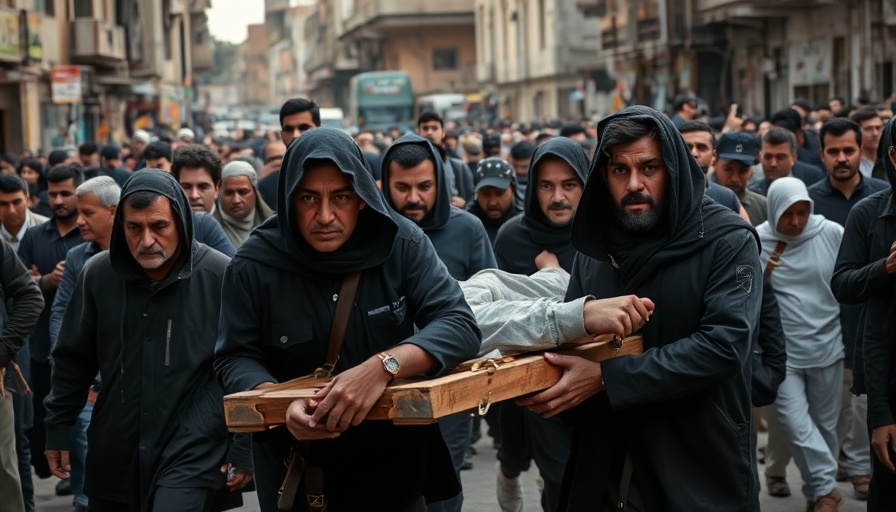
A Disastrous Humanitarian Mission: Nightmares in Gaza
The desperation was palpable in Rafah, a city in southern Gaza, as thousands gathered for an aid distribution scheme thought to alleviate some of their suffering. Reports indicate that near 50 people lost their lives and around 300 were injured on what was supposed to be a day of hope. Instead, it became a day marked by chaos and tragedy as many rushed to access vital supplies after months of deprivation.
Unraveling the Aid Effort's Design
The aid effort jointly conceived by Israel and the United States was designed to deliver humanitarian assistance while minimizing the risk of aid falling into the hands of Hamas. Palestinian residents had received little aid in recent months, heightening tensions and fears. Yet, the implementation was marred by confusion and insufficient planning.
Witness Accounts: A Disturbing Reflection
Survivors like Mohammed Abdulal, who was shot while trying to secure food, paint a grim scene of the shooting. “I only took two steps before I felt a bullet tear into my right cheek and neck,” he recounted. Amidst the chaos, gunfire erupted, and panic ensued as terrified individuals scrambled for safety, revealing the dire need for better safety protocols in humanitarian crises.
Diverse Perspectives on the Incident
While Israeli officials defended their military's actions, claiming they had responded to unidentified threats, many Palestinians view such justifications as dismissive of the value of human life. This incident has spotlighted the broader complexities of delivering humanitarian aid in conflict zones and raises real questions regarding accountability and oversight.
Connections to Broader Humanitarian Challenges
This tragedy isn’t just an isolated incident; it underscores fundamental challenges within the humanitarian system when political agendas intertwine with the dire need for relief. The reliance on private security contractors complicates matters, often prioritizing security over the accessibility of aid, which could further exacerbate suffering.
Looking Ahead: Future Predictions and Strategic Improvements
To genuinely support the people of Gaza, it’s crucial to reassess humanitarian strategies in light of these events. As this incident reveals, merely opening aid sites will not suffice. Future efforts must consider safety, security, and the political landscape in which they operate to avoid repetition of such tragedies.
Acting Now: What Can Be Done
Humanitarian organizations across the globe should advocate not just for the immediate needs of those affected, but also for systemic changes. Calling for safety assurances, transparent operations, and community involvement in aid distribution can lead to more effective and empathetic humanitarian missions.
The memories of that chaotic night will not fade easily for those who endured it. Real change is necessary—for the people of Gaza and for humanitarian missions worldwide.
 Add Row
Add Row  Add
Add 




 Add Row
Add Row  Add
Add 

Write A Comment